Have you ever heard of the Rear Delt Machine? If you’re someone who’s interested in building strong, healthy shoulders then you should definitely consider incorporating this machine into your workout routine. In this article, we’ll explore everything you need to know about the Rear Delt Fly Machine and how it can benefit your shoulder development.
Rear Delt Machine
The Rear Delt Machine is a piece of exercise equipment designed to target the rear deltoid muscles, which are located on the back of your shoulders. This machine allows you to perform the rear delt fly exercise with proper form and technique, without putting unnecessary strain on other parts of your body.
Importance of Rear Delt Machine
Strengthening your rear deltoids is crucial for building strong, healthy shoulders and improving your overall upper body strength. Neglecting the rear deltoids can lead to imbalances in your shoulder muscles, which can cause pain and discomfort over time. Using the Rear Delt Machine allows you to target this often-neglected area of your shoulders and achieve a well-rounded, balanced upper body.
Overview of the article
In this article, we’ll dive deeper into the anatomy of the rear deltoids, the benefits of targeting this area, how to properly use the Rear Delt Machine, and other exercises that can help strengthen your rear delts. We’ll also provide tips for incorporating the machine into your workout routine and avoiding common mistakes.
Anatomy of Rear Deltoids
Explanation of Deltoid Muscles
The deltoid muscles are the main muscles responsible for moving your shoulder joint. They’re divided into three parts: the anterior deltoid, the medial deltoid, and the posterior deltoid. The anterior deltoid is located on the front of your shoulders, while the medial deltoid is located in the middle. The posterior deltoid, which we’ll be focusing on in this article, is located on the back of your shoulders
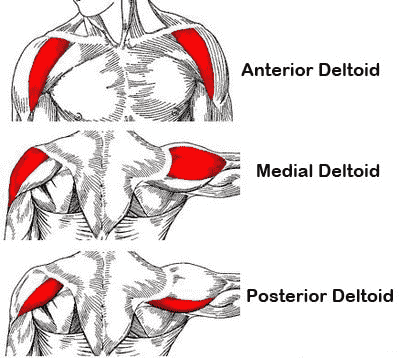
Rear Deltoid Anatomy
The rear deltoids, also known as the posterior deltoids, are small but important muscle group located on the back of your shoulders. They’re responsible for pulling your arms backward, as well as helping to stabilize your shoulder joint. Strengthening your rear deltoids can improve your posture, reduce your risk of shoulder injuries, and help you perform better in activities that involve pulling motions.
Importance of strengthening Rear Deltoids
As mentioned earlier, neglecting your rear deltoids can lead to imbalances in your shoulder muscles, which can cause pain and discomfort over time. Strengthening your rear deltoids can help improve your posture and prevent injuries by promoting balanced shoulder development.

Benefits of Rear Deltoids
The rear deltoids are an essential part of the shoulder muscles that are often neglected in workouts. However, strengthening them is crucial to balance out the development of your shoulders and prevent injuries. Here are some of the benefits of targeting and using the rear delt machine:
Benefits of targeting the rear delts:
Targeting the rear deltoids helps to improve posture, balance, and stability. It also helps to prevent injuries by strengthening the muscles that are often overlooked in regular exercises.
Benefits of using the rear delt fly machine:
The rear delt machine provides a controlled range of motion and isolates the rear deltoids, allowing for a more targeted workout. It also reduces the risk of injury by minimizing the involvement of other muscles and joints.
Isolation of Rear Deltoids:
The rear delt machine is excellent for isolating the rear deltoids, making it easier to focus on building strength in that specific muscle group.
Better Control of Shoulder Joint:
Using the rear delt machine helps to strengthen the muscles that control the shoulder joint, improving stability and reducing the risk of injury.
Balanced Shoulder Development:
Incorporating exercises that target the rear deltoids, such as the rear delt machine, into your workout routine helps to balance out the development of your shoulders, preventing muscle imbalances that can lead to injuries.
How to Use the Rear Delt Fly Machine

A. Proper Form and Technique
Using proper form and technique is crucial for getting the most out of your rear delt machine workout and avoiding injury. Here are the steps to perform a rear delt fly using a machine:
- Adjust the seat height so that the handles are at shoulder height.
- Sit with your back against the pad and your feet flat on the floor.
- Grasp the handles with your palms facing down and your elbows slightly bent.
- Keeping your chest up and your shoulders back, pull the handles apart until your arms are fully extended.
- Slowly bring the handles back to the starting position, making sure to maintain control throughout the movement.
B. Recommended Reps and Sets
To build strength and endurance in your rear delts, aim for 3-4 sets of 8-12 reps. Rest for 30-60 seconds between sets.
C. Common mistakes to avoid
- To avoid injury and maximize your results, be sure to avoid these common mistakes:
- Using too much weight: Many people make the mistake of using too much weight, which can result in poor form and reduce the effectiveness of the exercise. Instead, start with a light weight and gradually increase as you become stronger.
- Leaning forward or backward: Leaning forward or backward while performing the exercise can put unnecessary strain on your back and reduce the effectiveness of the exercise. Keep your back straight and core engaged to maintain proper form.
- Allowing momentum to do the work: It’s important to use a slow, controlled movement throughout the exercise. Allowing momentum to do the work reduces the amount of work your rear deltoids have to do, resulting in less muscle activation and less progress.
- Shrugging your shoulders: Many people make the mistake of shrugging their shoulders while performing the exercise. This can result in tension in the neck and shoulders and reduce the effectiveness of the exercise. Keep your shoulders down and back throughout the exercise to ensure proper form and maximize results.
D. Variations of Rear Delt Machine
Variations of the rear delt machine can provide different challenges and target the rear deltoids from different angles. Here are some more details about each variation:
Standing Rear Delt Fly Machine
This variation involves standing upright and holding onto the machine’s handles while performing the exercise. It can provide a more challenging workout since you must engage more stabilizing muscles to maintain balance. Additionally, standing variations of the rear delt fly machine can also help improve posture and overall body stability.
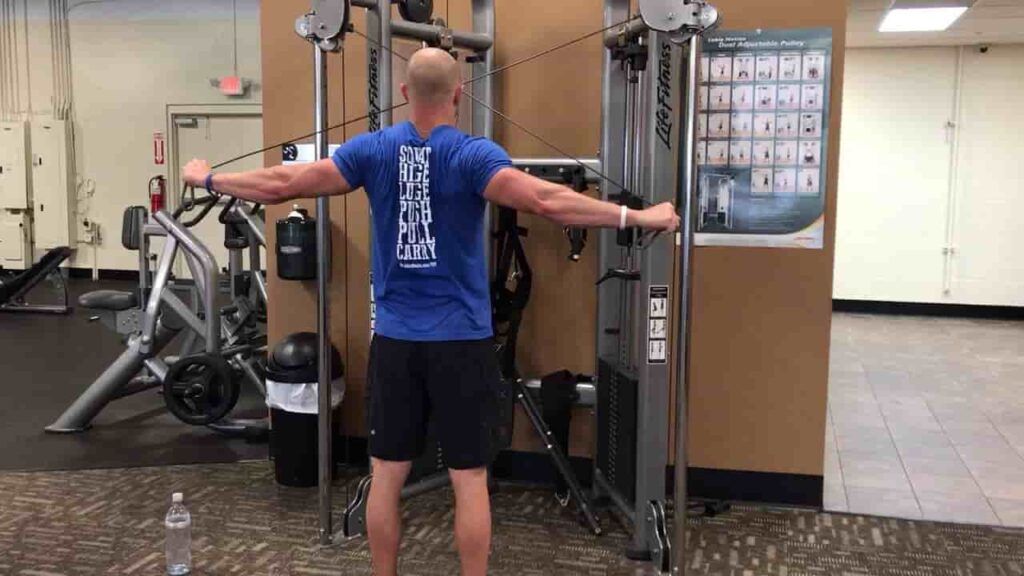
Seated Rear Delt Fly Machine
The seated version of the rear delt fly machine is the most common and involves sitting with your back against a pad while performing the exercise. This version is great for beginners or those who have difficulty standing for extended periods of time. It also allows for a greater focus on the rear deltoids, as other muscles are less engaged.
Incline Rear Delt Fly Machine
This variation involves sitting at an incline with your chest supported, which can engage more of your upper back muscles in addition to the rear deltoids. This variation may be more suitable for intermediate or advanced gym-goers who want to challenge themselves with a more complex exercise.
It’s important to note that all variations of the rear delt fly machine can be effective for strengthening and toning the rear deltoids. Choosing a variation depends on individual goals, fitness level, and personal preference.
Best Exercises for Rear Deltoids
While the rear delt machine is an effective exercise, it’s important to include a variety of exercises in your workout routine to fully target your rear delts. Here are three of the best exercises for rear deltoids:
A. Rear Deltoid Cable Fly
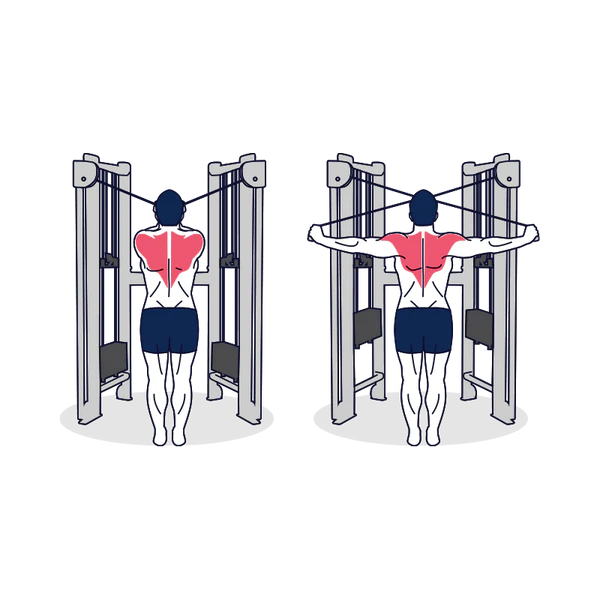
The cable fly is a great exercise for targeting the rear delts, as it provides constant tension throughout the movement. Here’s how to perform the exercise:
- Set up a cable machine with the handles at shoulder height.
- Stand with your feet shoulder-width apart and your back straight.
- Grasp the handles with your palms facing down and your elbows slightly bent.
- Keeping your chest up and your shoulders back, pull the handles apart until your arms are fully extended.
- Slowly bring the handles back to the starting position, making sure to maintain control throughout the movement.
B. Bent-Over Lateral Raise
The bent-over lateral raise is a great exercise for targeting the rear delts and can be performed with dumbbells or a barbell. Here’s how to perform the exercise:
- Hold a dumbbell or barbell with an overhand grip.
- Bend forward at the waist until your torso is parallel to the floor.
- Keeping your elbows slightly bent, raise the weight out to the sides until your arms are parallel to the floor.
- Slowly lower the weight back down to the starting position.
C. Reverse Pec Deck Fly
The reverse pec deck fly is another great exercise for targeting the rear deltoids.
Sure, here are some key points to remember when performing the reverse pec deck fly:
- Sit facing the back of a pec deck machine and adjust the seat so that the handles are at shoulder height.
- Grasp the handles with your palms facing each other.
- Pull the handles towards your chest while squeezing your shoulder blades together.
- Make sure to keep your elbows slightly bent throughout the movement.
- Slowly release the weight back to the starting position and repeat for several reps.
- It’s important to maintain control throughout the exercise and avoid using momentum to swing the weight.
- You can adjust the weight and number of reps to fit your fitness level and goals.
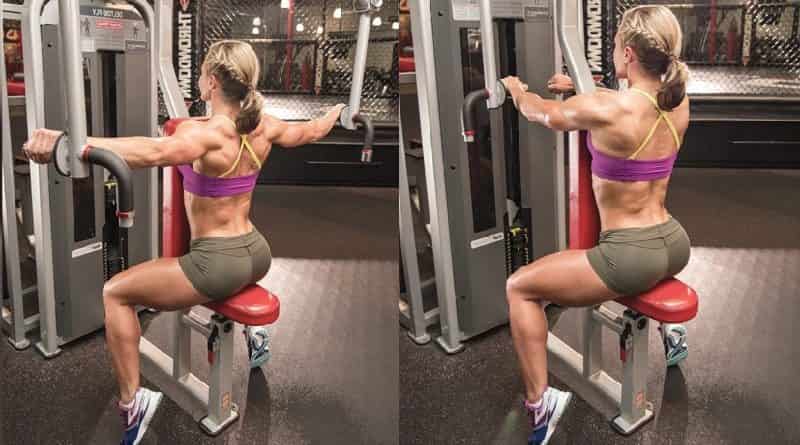
Rear Delt Fly Machine Alternatives
1. Dumbbell Rear Delt Fly
This exercise is an effective alternative to the Rear Delt Machine and can be done with dumbbells. You can perform this exercise while standing, sitting or lying down on a bench. It helps to strengthen the rear deltoids and improve posture.
2. Cable Rear Delt Fly
This exercise is another great alternative to the Rear Delt Machine and can be done with a cable machine. This exercise helps to target the rear deltoids and improve overall shoulder strength.
3. Resistance Band Rear Delt Fly
Resistance bands are versatile pieces of equipment that can be used for a variety of exercises. You can use resistance bands to perform the Rear Delt Fly exercise, which helps to target the rear deltoids and improve shoulder strength.
4. Inverted Rows
This exercise is a great alternative to the Rear Delt Machine and helps to target the rear deltoids, upper back, and biceps. You can perform this exercise with a barbell, dumbbell, or suspension trainer.
Incorporating the Rear Delt Machine into Your Workout Routine
Now that you know the benefits of the rear delt machine and the best exercises for targeting the rear deltoids, it’s time to incorporate this machine into your workout routine. Here are a few tips for getting the most out of your rear delt machine workouts:
A. Sample workout routine
Here’s an example of a workout routine that incorporates the rear delt machine:
- Warm up with 5-10 minutes of light cardio, such as walking or jogging.
- Perform 3 sets of 10-12 reps on the rear delt machine.
- Perform 3 sets of 10-12 reps of the bent-over lateral raise.
- Perform 3 sets of 10-12 reps of the reverse pec deck fly.
- Cool down with 5-10 minutes of stretching.
B. Tips for maximizing results
To get the most out of your rear delt machine workouts, try these tips:
- Use proper form and technique to target the rear deltoids effectively.
- Increase the weight gradually as you get stronger.
- Mix up your workouts by incorporating different exercises and variations.
- Rest for at least 48 hours between workouts to allow for muscle recovery.
- Always warm up before using the machine to prepare your muscles and prevent injury.
- Start with a lighter weight than you think you can handle and gradually increase it over time.
- Use proper form and technique to avoid strain on your neck and shoulders. Keep your back straight and your shoulders relaxed throughout the exercise.
- Avoid locking your elbows when extending your arms, as this can lead to injury. Instead, maintain a slight bend in your elbows.
- If you experience any pain or discomfort, stop using the machine immediately and consult with a fitness professional or medical provider before resuming use.
Frequently Asked Question
| FAQ | Answer |
|---|---|
| Is rear delt machine effective? | Yes, the rear delt machine is effective in targeting and strengthening the rear deltoid muscles. |
| What does the rear delt machine target? | The rear delt machine primarily targets the posterior deltoid muscles in the shoulders. |
| What is the correct form for rear deltoid machine? | To perform the rear delt machine exercise correctly, sit with proper posture, grasp the handles, and pull them backward while keeping your back straight. Maintain control throughout the movement. |
| What is the gym machine for rear delts? | The gym machine specifically designed to target the rear deltoid muscles is called the rear delt machine or rear delt fly machine. |
Conclusion
In conclusion, the rear delt machine is an effective and efficient way to target the rear deltoids, which are often neglected in traditional shoulder exercises. Incorporating the rear delt fly machine into your workout routine can help improve posture, prevent injury, and promote balanced shoulder development.
Remember to use proper form and technique, and avoid common mistakes like using too much weight or swinging the arms.
BONUS TIP:
While the rear delt machine is a great tool, it shouldn’t be the only exercise you use to target your rear delts. It’s important to incorporate a variety of exercises, including cable flies, bent-over lateral raises, and reverse pec deck flies, to maximize results and avoid hitting a plateau.
So, if you’re looking to take your shoulder workouts to the next level and achieve a well-rounded, balanced physique, be sure to give the rear delt machine a try!
Sources
- Anabolic Aliens: The Rear Delt Fly Machine 101 | Form, Benefits, & More
- Reddit – r/Fitness: Tips for Reverse fly machine for rear delt?
- Steel Supplements Blog: How to Use the Rear Delt Fly Machine (Form and Benefits)
- Muscle and Strength: Machine Reverse Fly: Video Exercise Guide & Tips



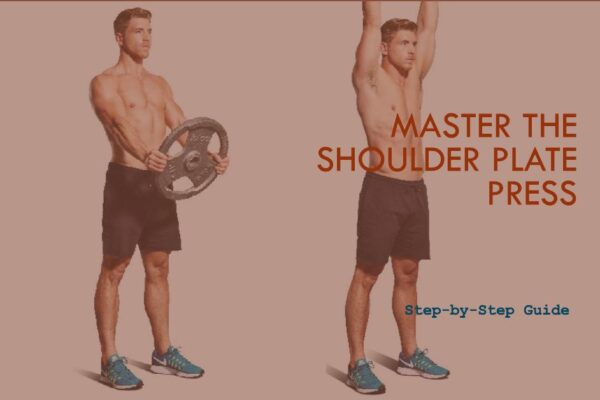


Leave a Reply